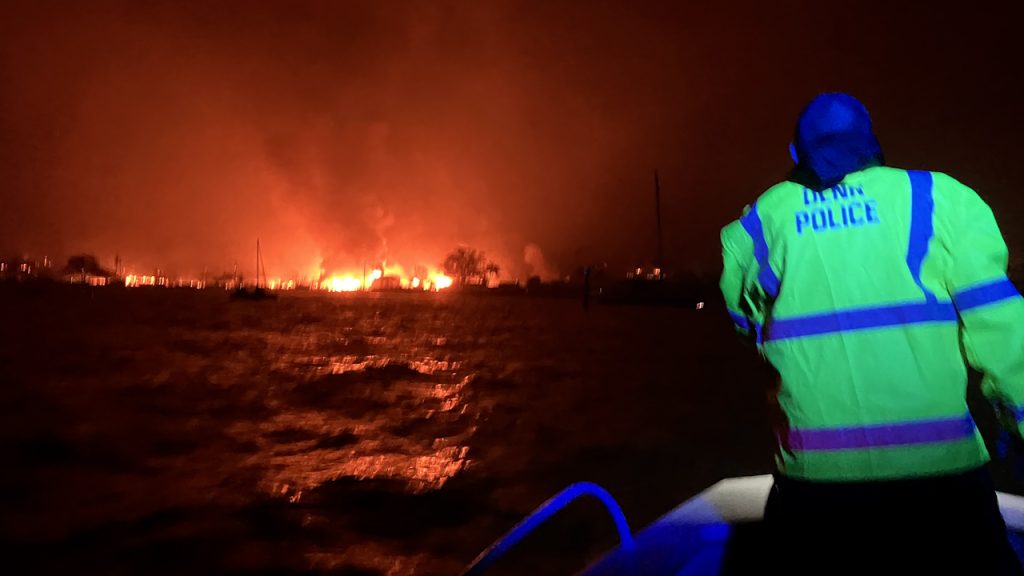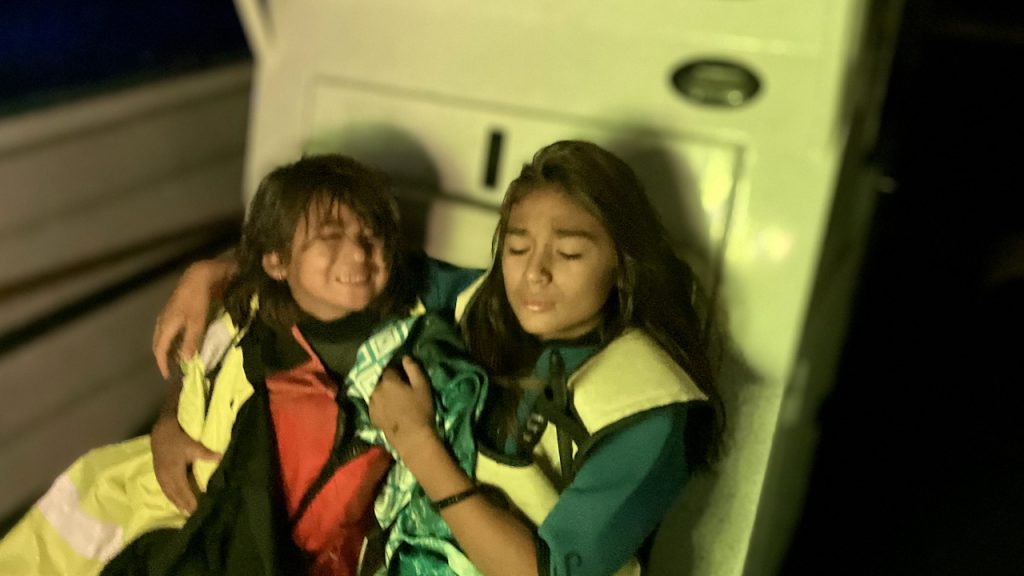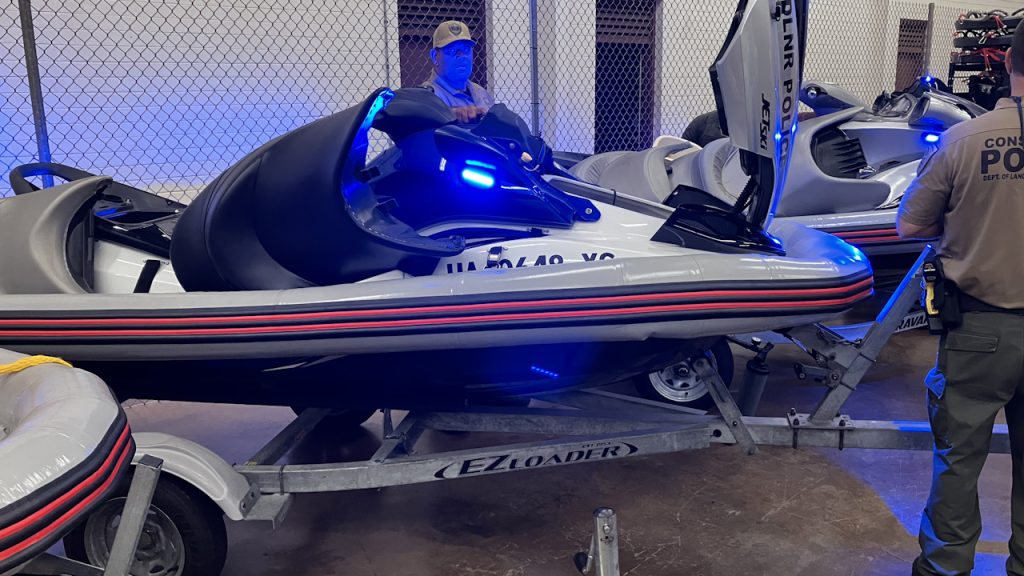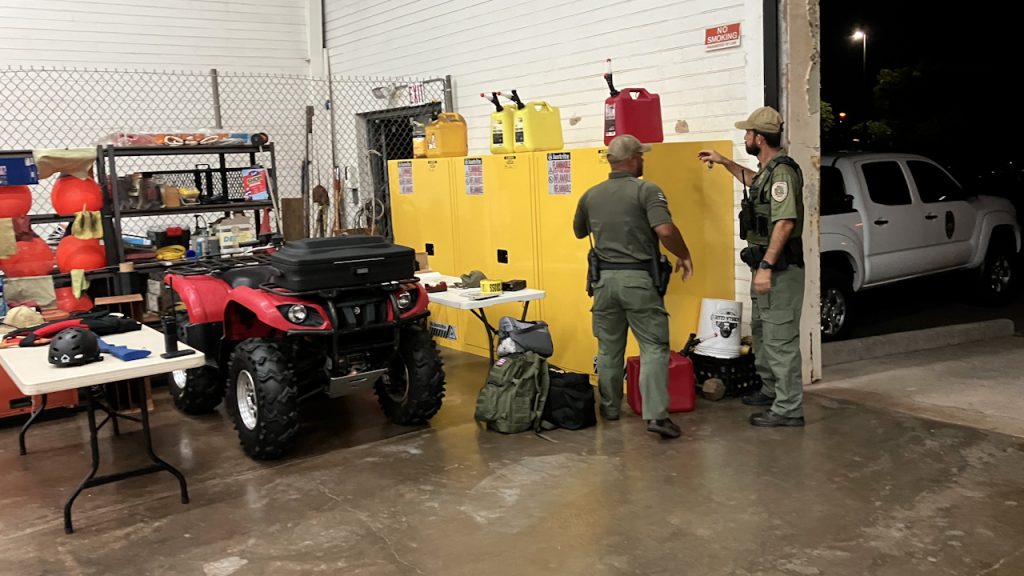Maui wildfires one year later: State conservation officers reflect on their roles the night of the Lahaina fires
Much like their police, fire and rescue colleagues, officers with the DLNR Division of Conservation and Resources Enforcement (DOCARE) never expected to be thrust into the middle of a literal fire storm that destroyed the town of Lahaina a year ago. One hundred two people perished in the inferno.
“We got a request for help late on the night of Aug. 8, 2023, and we deployed a boat and three personal watercraft from the Māʻalaea Small Boat Harbor. Normally the 13-mile trip takes a half hour. With hurricane force winds in our face and very rough sea conditions it took us more than an hour to get to Lahaina,” said DOCARE Lt. Jeff Kinores.
Lt. Wes Mundy added, “We responded to a call that there were people in the water in and around the Lahaina Small Boat Harbor, and our help was needed. We normally wouldn’t take our jet skis and our boats out in those conditions. The hurricane force winds of 40 to 50 knots that were fanning the flames in Lahaina were also impacting us.”
With a DOCARE boat in the lead, officers on personal watercraft followed close behind. Other officers on the highway helped them navigate through the rough and challenging sea conditions. Visibility was nearly nonexistent. Upon reaching Lahaina, with the town on fire, the wind-blown, thick smoke made seeing anything a near impossibility.
“I operated vessels out of Māʻalaea Small Boat Harbor for 21 years. The area around Ukumehame is known to be windy, but that night was the windiest I’d ever experienced, said DOCARE Officer Joseph Carvalho Jr. “Once we finally got to Lahaina at about 1 a.m. on August 9, the biggest challenge we faced was all the debris in the water. It was blowing offshore and trying to navigate through that and not suck debris into our skis or boat was really difficult.”
Rookie officer Paul Fareea said, “You can’t train for moments like that.” Lt. Kinores added, “Coming around by Launiupoko up to Puamana you could see the glow. We were breathing smoke. You could feel the heat off the land with embers and smoke coming at us. This threw our sense of direction completely off. Once we arrived at the Front Street shoreline the only landmark I could use, was a single pine tree to locate where people were being rescued.”
The DOCARE team began searching for and rescuing people who’d run into the water or were on boats that had burned. “We’d call out to see if we could hear anyone,” Kinores explained.
Officer Wyatt Burns said they met up with the US Coast Guard who asked DOCARE to transport two children to Māla Wharf. Photographs show a young girl and her slightly older brother huddled underneath a blanket. “They were exhausted. We put life jackets on them, kept them as warm as possible, gave them water, and tried to comfort them,” commented Lt. Mundy. He said the young girl was having a tough time, but her brother did a good job taking care of her until they were safely back on land.
Meantime Lt. Kinores continued his search, at which point he found a woman stuck in a light or beacon tower. “She was calling out and I ended up getting her off the rocks and to a boat and safety. Eventually everybody we picked up was taken to Māla Wharf where the fire department evacuated them out of the area.”
Like so many people who experienced the fires and like the hundreds of first responders who performed rescues and battled the flames the best they could, the night of Aug. 8 left lifelong, indelible impressions. Memories of organized chaos, but now a year later, of the positive things associated with the disaster response.
Lt. Wes Mundy, “A lot of things go through your mind. The resilience of Maui, the resilience of the people and how they come together to work for the common good. Our branch had just got a new batch of officers and we spent a lot of time training them. The only members of our team who did not respond that night were those evacuating their own homes from the fire zone. No one is asking for a pat on the back. People were dying, so we went and that’s it.”
DOCARE Maui Branch Chief Howard Rodriques said, “The next morning, Aug. 9, our officers, some of whom had been involved in the overnight search and rescue efforts, began a continuous daily presence in Lahaina for several months to provide security and enforcement.
*Story courtesy DLNR Hawaiʻi.



















